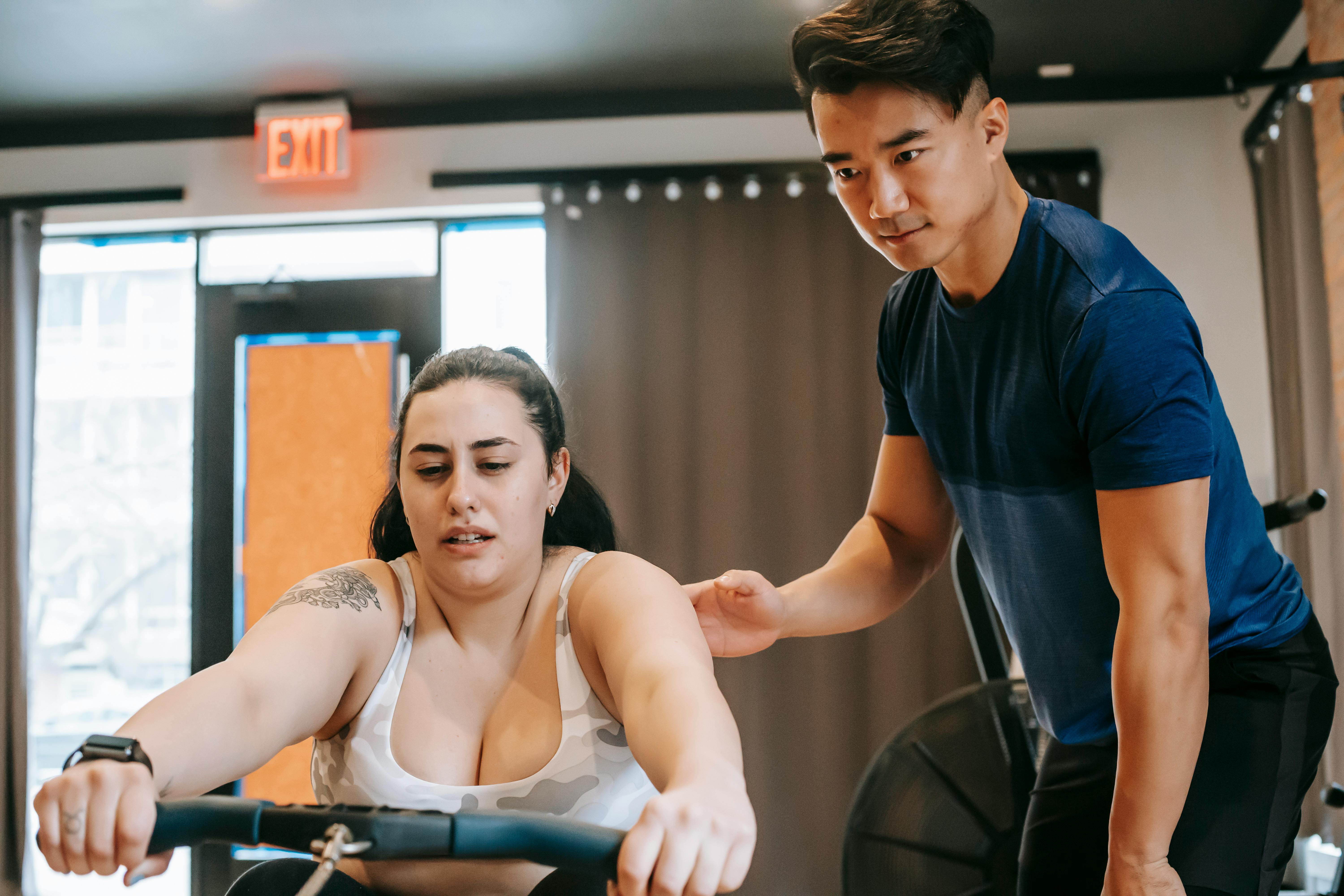In the journey towards a full recovery after surgery, you may be wondering if there are mindfulness exercises that can support your healing process. Mindfulness has gained significant attention in recent years for its ability to reduce stress, promote relaxation, and improve overall well-being. But, can it also play a role in the recovery phase? This article explores the potential benefits of mindfulness exercises for post-operative recovery and how they can contribute to your healing journey. So, let’s take a moment to explore this fascinating topic together. Yes, there are! Incorporating mindfulness practices into your post-operative recovery journey can have numerous benefits for your overall well-being. From reducing stress and anxiety to enhancing pain management, mindfulness techniques can play a significant role in promoting healing and fostering a positive recovery experience. In this article, we will explore various mindfulness exercises that you can try during your post-operative recovery, along with their specific benefits.

Reducing Stress and Anxiety
Post-operative recovery can often be accompanied by feelings of stress and anxiety. Mindfulness practices offer a calming and centering technique to alleviate these emotions. By focusing on the present moment and quieting the mind, you can reduce stress and promote a sense of relaxation. Breathing techniques, such as diaphragmatic breathing, 4-7-8 breathing, and counted breaths, can be particularly effective in relieving stress and anxiety. These techniques involve deep, slow breaths that help activate the body’s relaxation response, leading to a state of calmness and tranquility.
Improving Pain Management
One of the most challenging aspects of post-operative recovery is managing pain. Mindfulness techniques can provide an effective approach to pain management. The body scan meditation, for example, allows you to bring awareness to different body parts, acknowledging any sensations or discomfort you may be experiencing. By directing your attention to these areas and embracing them with compassion, you can begin to relax tense muscles and promote healing.
Enhancing Overall Well-being
In addition to reducing stress and improving pain management, mindfulness exercises can greatly enhance your overall well-being during post-operative recovery. Guided imagery, for instance, involves visualizing your body healing and creating positive images and sensations. By envisioning the healing process and directing positive energy towards your body, you can enhance the recovery process and boost your well-being.
Breathing Techniques
Breathing techniques are an essential component of mindfulness practices. They help ground you in the present moment and bring a sense of calmness and relaxation. Here are a few commonly used breathing techniques for post-operative recovery:
Diaphragmatic Breathing
Diaphragmatic breathing, also known as belly breathing or deep breathing, involves taking slow, deep breaths into your diaphragm rather than shallow breaths into your chest. By consciously engaging your diaphragm, you can activate the body’s relaxation response and reduce stress levels.
4-7-8 Breathing
The 4-7-8 breathing technique is a simple yet powerful technique for calming the mind and promoting relaxation. To practice this technique, inhale quietly through your nose for a count of 4, hold the breath for a count of 7, and exhale forcefully through your mouth for a count of 8. Repeat this cycle several times, focusing on the rhythm of your breath.
Counted Breaths
Counted breaths, also known as mindful breathing, involves paying attention to each breath and counting them silently in your mind. Start by taking a deep breath in, counting “one” silently. Exhale slowly, counting “two.” Continue this counting pattern up to ten and then start again from one. If your mind wanders, gently bring your focus back to your breath and the counting.

Body Scan Meditation
The body scan meditation is a practice that brings awareness to different parts of your body, allowing you to deeply connect with and relax each area. By systematically scanning your body from head to toe, you can identify any areas of tension or discomfort, and consciously release them. Here’s how to practice body scan meditation:
Bringing Awareness to Different Body Parts
Start by finding a comfortable position, either sitting or lying down. Begin by focusing your attention on your breath, allowing it to guide you into a state of relaxation. Slowly bring your awareness to different body parts, starting from the top of your head all the way down to your toes. Notice any sensations or areas of tension as you go along.
Relaxing Tense Muscles
Whenever you come across a tense or uncomfortable area, make an effort to consciously relax that muscle or body part. Release any tension you may be holding and invite a sense of ease and relaxation. You can visualize your breath flowing into that area, carrying with it relaxation and healing.
Promoting Healing
The body scan meditation promotes overall healing by allowing you to become fully present with your body. By acknowledging any discomfort or pain and responding to it with compassion, you can create an environment that supports healing and well-being.
Guided Imagery
Guided imagery involves using your imagination to create positive mental images and sensations, promoting healing and overall well-being. By visualizing your body healing and experiencing positive emotions, you can positively influence your recovery process. Here’s how to practice guided imagery:
Visualizing the Body Healing
Find a quiet and comfortable space where you can sit or lie down. Close your eyes and take a few deep breaths to center yourself. Begin to visualize your body healing, both internally and externally. Imagine a warm, healing light flowing through your body, nourishing your cells and promoting healing.
Creating Positive Images and Sensations
As you continue with the visualization, imagine yourself engaging in activities that bring you joy and happiness. Visualize yourself surrounded by supportive loved ones, engaging in activities that promote well-being, and feeling a sense of vitality and strength.
Enhancing Recovery Process
By engaging in guided imagery, you are actively participating in your own healing process. By visualizing positive images and sensations, you can enhance the recovery process and create a positive mindset that supports healing and well-being.

Progressive Muscle Relaxation
Progressive muscle relaxation is a technique that involves systematically contracting and releasing specific muscle groups, promoting relaxation and reducing muscle tension. By practicing this technique regularly, you can become more attuned to your body and release tension effectively. Here’s how to practice progressive muscle relaxation:
Contracting and Releasing Muscles
Start by finding a comfortable position and take a few deep breaths to relax. Begin with a specific muscle group, such as your shoulders or fists. Slowly tense the muscles in that area, holding the tension for a few seconds, and then release. Notice the difference between tension and relaxation.
Reducing Muscle Tension
Continue moving through different muscle groups, working your way from head to toe. Pay attention to any areas of tension or tightness and make an effort to let go of that tension with each release. As you progress through the exercise, you will feel a sense of deep relaxation and peacefulness.
Promoting Relaxation
Progressive muscle relaxation helps promote relaxation by releasing tension from the body. By regularly practicing this technique, you can reduce muscle tension, promote a sense of calmness, and enhance your overall well-being during post-operative recovery.
Loving-Kindness Meditation
Loving-kindness meditation, also known as metta meditation, involves cultivating feelings of compassion, love, and kindness towards oneself and others. By practicing loving-kindness meditation, you can promote positive emotions, foster healing, and enhance your overall well-being. Here’s how to practice loving-kindness meditation:
Cultivating Feelings of Compassion
Begin by finding a quiet space and assuming a comfortable posture. Take a few deep breaths to relax and center yourself. Then, bring to mind someone you deeply care for and wish them well. Repeat a simple phrase such as, “May you be safe, may you be healthy, may you live with ease” silently in your mind.
Promoting Positive Emotions
Move on to yourself and repeat the same phrases, cultivating a sense of self-compassion. Recognize your own worthiness of love, care, and happiness. As you continue with the meditation, gradually extend those feelings of loving-kindness towards other individuals, including loved ones, acquaintances, and even difficult relationships.
Fostering Healing and Well-being
Loving-kindness meditation fosters healing and well-being by nurturing positive emotions and promoting a sense of connection and compassion. By cultivating feelings of love and kindness towards yourself and others, you can create a supportive and healing environment during your post-operative recovery.
Mindful Eating
During post-operative recovery, mindful eating can play a crucial role in optimizing nutrition and promoting overall well-being. By paying attention to the sensory experience while eating, you can enhance digestion, nutrient absorption, and make mindful choices for your post-operative nutrition. Here’s how to practice mindful eating:
Paying Attention to Sensory Experience While Eating
Before you begin eating, take a moment to appreciate the visual appearance, aroma, and texture of your food. Chew slowly and savor each bite, paying attention to the flavors and sensations in your mouth. Engage all your senses to fully experience the process of eating.
Enhancing Digestion and Nutrient Absorption
By eating mindfully, you allow your body to fully digest and absorb the nutrients from your food. The act of slowing down and being fully present while eating can also help prevent overeating and promote a healthy relationship with food.
Promoting Mindful Choices for Post-operative Nutrition
Mindful eating allows you to make conscious choices about the foods you consume during your post-operative recovery. By paying attention to your body’s nutritional needs and intuitively choosing nourishing foods, you can support your healing process and overall well-being.
Walking Meditation
Walking meditation is a mindful practice that involves bringing your attention and awareness to each step, connecting with your body and environment. It is a gentle yet effective way to boost both physical and mental recovery during post-operative healing. Here’s how to practice walking meditation:
Bringing Mindfulness to Each Step
Find a quiet and safe outdoor space where you can walk at a slow and relaxed pace. Begin by focusing your attention on the physical sensations of walking. Notice how your feet connect with the ground, the movement of your legs, and the subtle shifts in your balance.
Connecting with Body and Environment
As you continue walking, become aware of the different sensations in your body. Pay attention to your posture, your breath, and the muscles involved in each step. Also, take notice of your surroundings – the colors, sounds, and smells around you. Allow yourself to be fully present in the walking experience.
Boosting Physical and Mental Recovery
Walking meditation can have numerous benefits for both physical and mental recovery. It promotes gentle exercise, improves circulation, and helps relieve stress and anxiety. By engaging in this mindful practice, you can boost your overall well-being during post-operative recovery.
Journaling
Journaling is a reflective practice that allows you to express your thoughts and emotions, track your progress, and promote self-awareness and healing. Keeping a journal during your post-operative recovery can be an excellent way to document your journey and gain valuable insights. Here’s how to practice journaling:
Reflecting on Thoughts and Emotions
Set aside dedicated time each day to reflect on your thoughts and emotions. Write freely and honestly about your experiences, fears, and hopes. Allow yourself to express any frustrations or challenges you may be facing. Journaling provides a safe space to explore your emotions and gain clarity.
Tracking Progress and Setbacks
Use your journal to track your progress and setbacks throughout your recovery journey. Celebrate the small victories and acknowledge any setbacks as opportunities for growth. By documenting your experiences, you can gain a sense of perspective and observe patterns or changes over time.
Promoting Self-awareness and Healing
Journaling allows you to develop self-awareness and gain insights into your own healing process. By consistently practicing this reflective exercise, you can foster self-compassion, promote healing, and gain a deeper understanding of yourself and your recovery journey.
Adapting Mindfulness to Physical Limitations
During the post-operative recovery period, it is essential to adapt mindfulness practices to your specific physical limitations. Here are some guidelines to help you tailor mindfulness exercises to your individual needs:
Modifying Exercises for Post-operative Restrictions
If you have specific post-operative restrictions or limitations, consult with your healthcare professionals to understand what modifications are necessary for each mindfulness exercise. They can provide guidance on how to practice safely and effectively.
Working with Healthcare Professionals for Guidance
Stay in close contact with your healthcare professionals throughout your recovery journey. They can provide valuable insights and recommendations for incorporating mindfulness practices into your specific post-operative care plan. Consulting with them ensures that you are following a mindful practice that aligns with your unique needs.
Tailoring Mindfulness Practices to Individual Needs
Remember that mindfulness practices are highly adaptable. If you are unable to perform certain exercises due to physical limitations, explore alternative techniques or approaches that allow you to experience mindfulness in a way that suits your individual circumstances. Tailor the exercises to your needs and comfort level.
In conclusion, incorporating mindfulness into your post-operative recovery can greatly benefit your overall well-being. From reducing stress and anxiety to improving pain management and enhancing healing, various mindfulness practices offer a holistic approach to support your recovery journey. By practicing breathing techniques, engaging in body scan meditation, using guided imagery, promoting muscle relaxation, cultivating loving-kindness, embracing mindful eating, practicing walking meditation, journaling, and adapting mindfulness to your physical limitations, you can optimize your recovery experience and foster a positive mindset. Remember to consult with your healthcare professionals for guidance and adapt the exercises to suit your individual needs. As you embark on your post-operative recovery journey, may mindfulness be a valuable companion, guiding you towards healing, well-being, and self-discovery.

Hello, I’m Kelly Joseph, the author behind Optimum Mindset for an Optimal Lifestyle. Welcome to our website, where we dive deep into the world of mindfulness techniques and productivity hacks. With a mission to help you achieve a more fulfilled life, we offer a comprehensive guide to mastering the art of an optimum mindset. I am passionate about enhancing mental resilience, fostering positivity, and unlocking the potential for goal achievement. This site is a treasure trove of practical tips and strategies that will empower you to live life to the fullest. Join me on this journey of self-discovery and personal growth.
